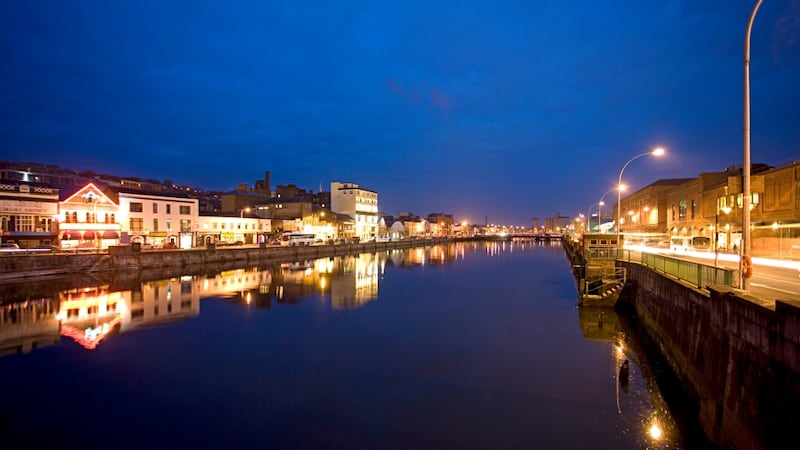Ten years ago Cork city seemed on the brink of major development, with economic growth promising a huge upgrade in infrastructure. But many of the projects stalled as the economy slowed. Now Cork is beginning to hope again.
Projects such as Cork Event Centre and the redevelopment of Páirc Uí Chaoimh are kicking off in the next few months, and the city should be on the brink of a big infrastructural investment. While road and rail projects – the motorway to Limerick and the upgrading of Kent Station – remain priorities, much focus is on the development of Cork Harbour as a commercial centre and tourist amenity.
The harbour area has a number of projects under way or due to start. If they all go to plan they will significantly enhance Cork Harbour as a shipping port, tourist attraction and centre for research and education. Minister for the Marine Simon Coveney, a local TD, has said it could become the Sydney of Europe.

The Port of Cork was refused planning permission in 2008 for a €160 million container terminal at Ringaskiddy, because of an inadequate road network. The company submitted a scaled-down plan last year, under the Strategic Infrastructure Act, for a €100 million development.
An oral hearing for the project was heard in September, and although An Bord Pleanála has written to the Port of Cork for more information about the proposed dumping of dredged material in the harbour, the company remains confident of obtaining the go-ahead. The Port of Cork says its annual economic contribution to Cork is about €250 million.
The new proposal involves the development of two sites, at the deepwater quay at Ringaskiddy West and at Ringskiddy East, where a multipurpose berth will accommodate ships carrying a range of cargoes.
Port of Cork’s manager of engineering services, Denis Healy, says the development is designed to replace the port’s current container terminal upstream, at Tivoli, where the narrowness and depth of the channel is preventing the port from accommodating newer, larger container ships. Healy hopes the new facility will be operational by 2018.
Cruise liners
Across the harbour in Cobh, the Port of Cork is preparing to embark on a €2 million upgrade to the deepwater berth, due to be completed by April, which will allow accommodate a newer type of liner. “The newer Quantum class cruise liners are only eight metres longer than existing vessels but they are three stories higher, so they need more moorings to hold them secure, and Cobh is unique in Ireland in that it is the only place where cruise liners can come alongside,” says Healy.
The Port of Cork currently welcomes about 50 cruise liners a year, but with the upgrade at Cobh, there are hopes to accommodate up to 60 of the larger vessels in the coming years. An estimated 160,000 visitors are due this year.
But it is in tourism that some of the most exciting developments in the harbour are taking place. There are plans to develop Spike Island – which over the centuries been home to a monastery, a fortress and a prison – as a tourist attraction. Cork County Council is planning to develop it as “Cork’s answer to Alcatraz” in an ambitious €40 million plan that is expected to take 15 years to complete.
The county council has commissioned a team that includes the architects Scott Tallon Walker to draw up a plan for the island. Among the proposals are a new 40-hectare national park with the 16-hectare Fort Mitchell at its centre, as well as exhibitions on prison life, an aquarium and a learning centre dedicated to oceanography.
This has already begun on a small scale, with the opening of the island to guided tours on the its environment and history. While Alcatraz attracts 1.3 million visitors a year, Cork County Council hopes to pull in 70,000 to Spike Island, rising to 200,000 a year when the facilities are completed.
Close to Spike lies Haulbowline, home to the Naval Service and, for decades, home of Irish Steel. The steel plant closed in 2001 leaving a legacy of heavy-metal residues. Coveney made it his mission to push through the clean-up of Haulbowline when he became Minister for the Marine, in 2011. Considerable progress has been made.
Aside from shipping and tourism, Cork Harbour is seeing significant developments on the research front, as the Irish Maritime and Energy Resource Cluster (Imerc) carries out pioneering work in a number of fields.
An alliance involving University College Cork, Cork Institute of Technology and the Naval Service, Imerc also includes the Beaufort Research Laboratory, where research is being carried out into hydraulics, sustainable energy and coastal issues such as seabed mapping. Eighty jobs were announced last month in the marine-energy sector, including 25 at the US-Irish ocean-energy company Resolute Marine.
Coveney says: “One hundred years ago Cork Harbour was one of the greatest harbours in Europe, and we’re going to make it happen again.”









